| Srl | Item |
| 1 |
ID:
114150
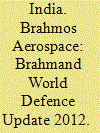

|
|
|
|
|
| Publication |
New Delhi, Pentagon Press, 2012.
|
| Description |
xii, 564p.Hbk
|
| Contents |
Forwarded by M M Pallam Raju
|
| Standard Number |
9788182745186
|
|
|
|
|
|
|
|
|
|
|
|
Copies: C:1/I:0,R:1,Q:0
Circulation
| Accession# | Call# | Current Location | Status | Policy | Location |
| 056739 | 355/IND 056739 | Main | On Shelf | Reference books | |
|
|
|
|
| 2 |
ID:
151617
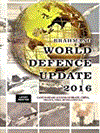

|
|
|
|
|
| Publication |
New Delhi, Pentagon Press, 2016.
|
| Description |
469p.pbk
|
| Standard Number |
9788182748903
|
|
|
|
|
|
|
|
|
|
|
|
Copies: C:1/I:0,R:0,Q:0
Circulation
| Accession# | Call# | Current Location | Status | Policy | Location |
| 058957 | 355/IND 058957 | Main | On Shelf | General | |
|
|
|
|
| 3 |
ID:
159184
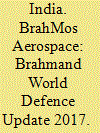

|
|
|
|
|
| Publication |
New Delhi, Pentagon Press, 2017.
|
| Description |
xiii, 411p.pbk
|
| Standard Number |
9788182749443
|
|
|
|
|
|
|
|
|
|
|
|
Copies: C:1/I:0,R:0,Q:0
Circulation
| Accession# | Call# | Current Location | Status | Policy | Location |
| 059402 | 355/IND 059402 | Main | On Shelf | General | |
|
|
|
|
| 4 |
ID:
060429
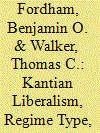

|
|
|
|
|
| Publication |
Mar 2005.
|
| Summary/Abstract |
In this paper, we evaluate the liberal claim that democratic states devote fewer resources to their militaries. Low military spending is thought to avert conflict spirals and release more resources to fund domestic programs. While prominent in many liberal international relations theories, most notably in Immanuel Kant's, this proposition has received little empirical scrutiny. Using several indicators of military resource allocation and data on a wide range of states since 1816, we find empirical support for the liberal argument, although regime type is not necessarily the strongest influence on military resource allocation.
|
|
|
|
|
|
|
|
|
|
|
|
|
|
|
|
| 5 |
ID:
123676
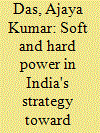

|
|
|
|
|
| Publication |
2013.
|
| Summary/Abstract |
India has reinforced its strategic objectives in Southeast Asia in response to the rise of China and its growing influence in Southeast Asia. 1 The new geopolitical focus on the region is complemented by India's increasing interest in economic integration with it. This has produced a new kind of strategic relationship that is based largely on the power of attraction rather than that of coercion. 2 India has utilized its rising economic and military resources, normally understood as "hard power," in the form of "soft power" with substantial success. While analysts tend to make a sharp distinction between the hard power of military and economic instruments available to the state, this article shows that there is a substantial overlap between them and that the "soft" aspects of hard power play a significant role in meeting India's strategic objectives. It also examines how purely soft power resources (such as culture) play a complementary role. Taken together, India's soft power-based on military as well as non-military resources-underlies its strategy of building strong defense and strategic links with Southeast Asia.
|
|
|
|
|
|
|
|
|
|
|
|
|
|
|
|